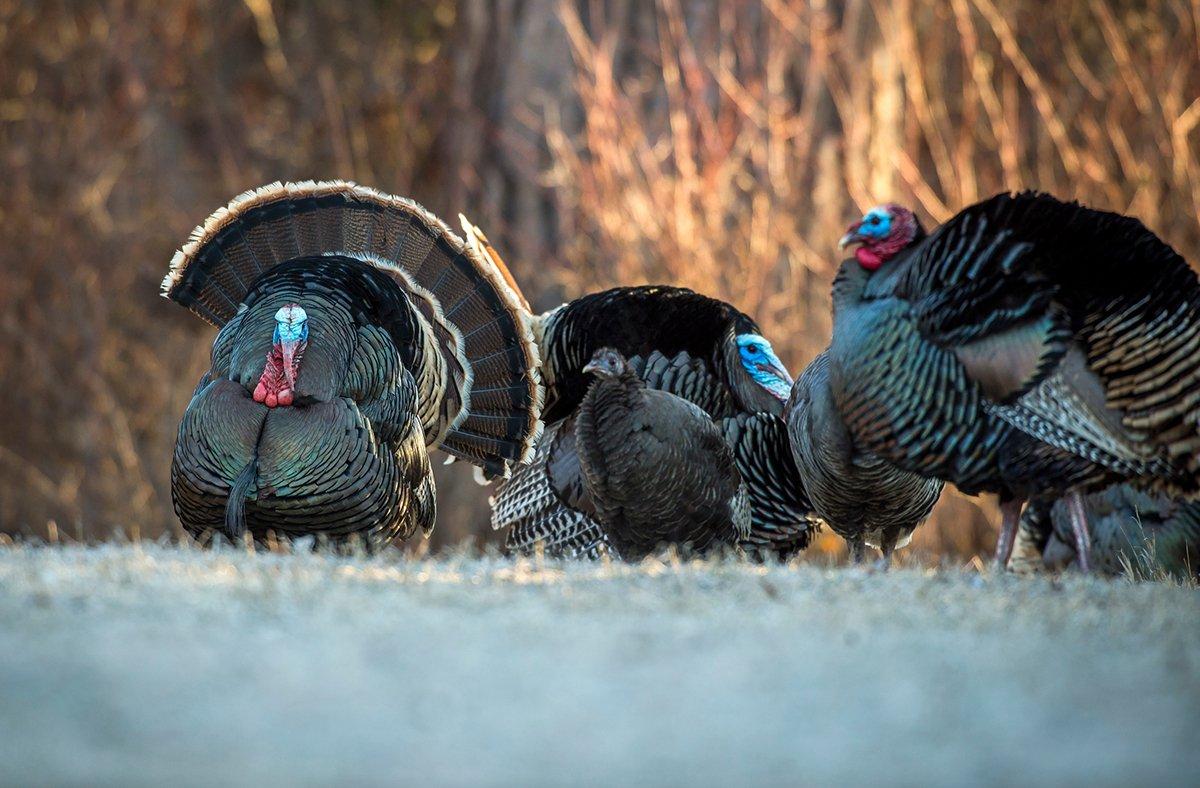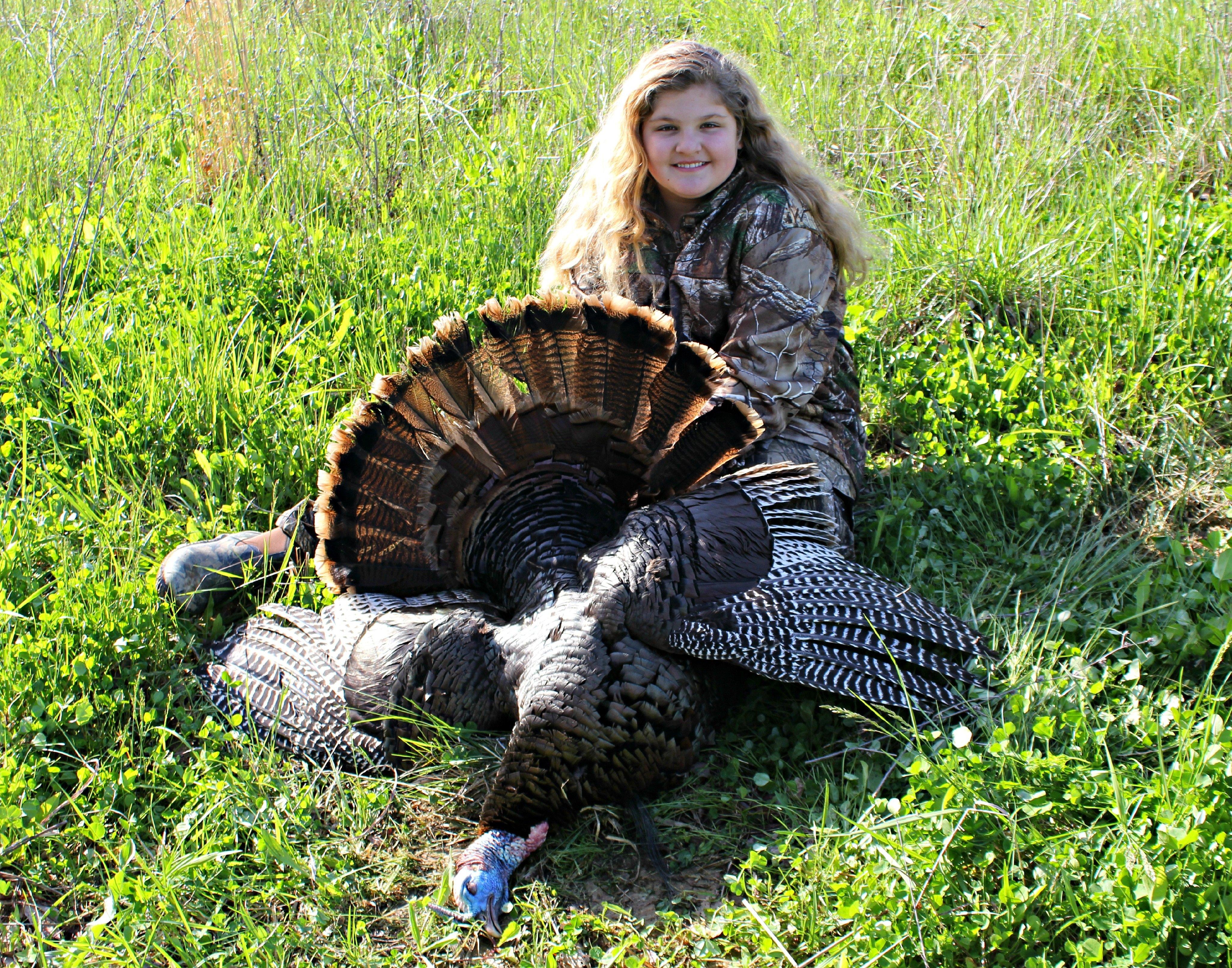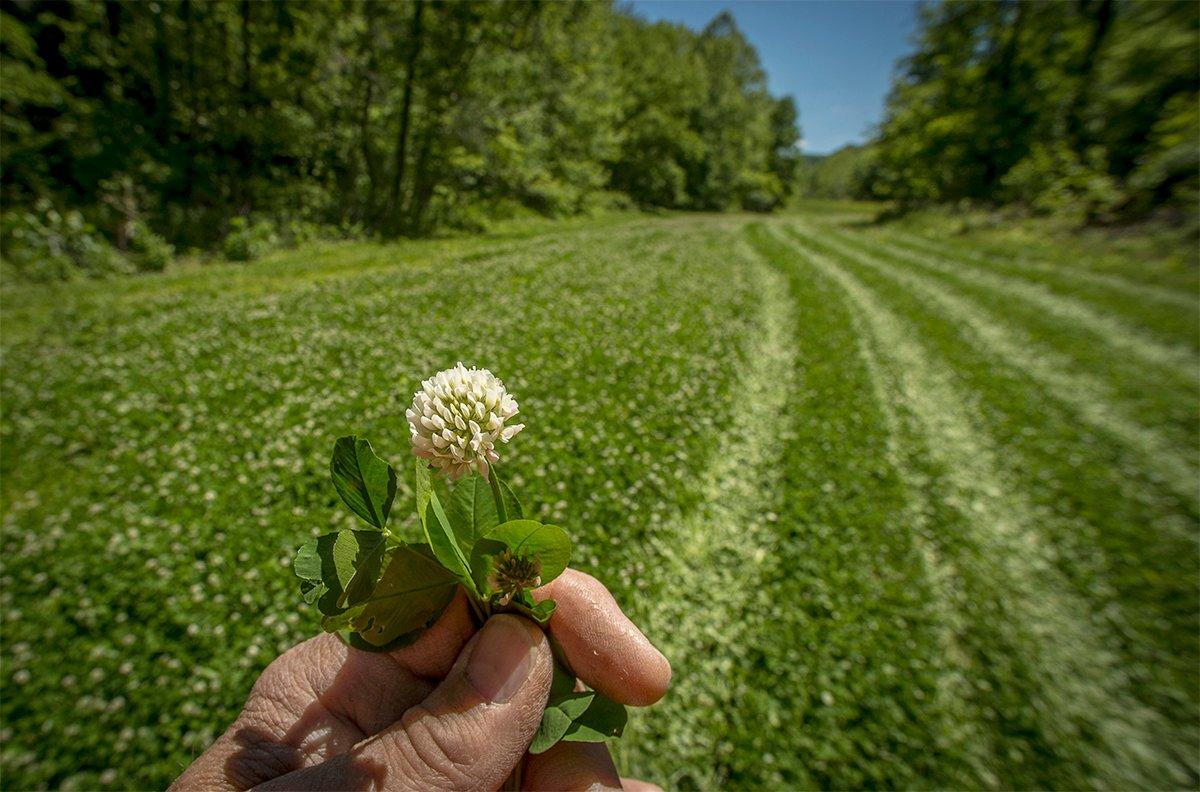Do You Make Food Plots for Turkeys?
Not just for deer, a good food plot will draw in turkeys and hold them in your area, vastly increasing your odds at tagging a longbeard this spring.
While food plots are most often associated with fall deer hunting, a green spring plot can be absolutely deadly on spring gobblers. The great thing about spring turkey plots is that they don't need to be large or involve heavy equipment to work. Even a plot as small as 20 feet by 20 feet can be turned into a killer turkey spot if it is in the right location. Even hand tools and a small broadcast spreader are sufficient for small, secluded open-timber areas.
Why do they work? A variety of reasons. First, because birds are hungry. Spring turkeys love tender green shoots of just about anything. Besides the vegetation, spring food plots offer a veritable buffet of insects and worms. After a long winter spent attempting to scratch the last bit of the previous fall's mast crop from under the snow and ice, spring turkeys think with their stomach. Even after the gobblers turn their attention to breeding, the hens will hang out where the food is, drawing in the toms as they do.
Once the gobblers get there, they use the open food plots as strutting areas. The most productive turkey plots are located along hardwood edges or timber openings. Gobblers naturally use these areas to show off to the local ladies, and a low carpet of vegetation makes the perfect dance floor.
Finally, hens prefer to nest along natural brushy edge habitat. The growth around the edge of food plots makes for a perfect location to build a nest, particularly if the vegetation around the edge is left wild and tangled. Having a nearby food source helps the hen remain close to the nest instead of venturing long distances to fill her belly. As season progresses, local gobblers will be searching for any remaining hens that might show interest. Having nesting hens wandering around the food plot makes for a perfect living decoy.
So you have a spot picked out, what should you plant? These five choices in this click-through photo blog will bring in the birds.

This group of cover crop or grain crops make up the easiest turkey plots to grow. They don't require deep soil prep, are fairly tolerant of weather extremes, and don't require much in the way of fertilizer. While all three will produce lush green growth during the cool weather of early turkey seasons, oats are the way to go if you desire grain production in the fall for a winter food source.
These crops are perfect for small timber openings that aren't accessible to heavy equipment. To plant remote areas, use a leaf blower to expose bare soil, then use a small rototiller or even a stiff rake to loosen the soil. Don't worry about tilling deeply, these grain crops only require a light covering with soil in order to germinate. Even if you are planting larger plots and have access to a tractor or equipment, wheat, oats and rye will provide a large green area that will attract birds from a distance.
Broadcast these grains at 50 to 75 pounds per acre and plant two to four weeks before season. These grains will germinate in cool soil and handle a few cold snaps.
(John Hafner photo)

Perhaps the king of turkey food plots, clover provides nearly year-round attraction. From tender green growth the turkeys crave in the spring, to a massive insect load, clover keeps their bellies full. While the previous food plots mentioned are considered annuals, a good clover spot can last a few years.
That longevity comes with a price. Clover requires more attention up front and is much pickier about soil pH than other crops. Be ready to do some prep work to establish and maintain your plot. That said, if you are looking for a surefire turkey sighting, you can't do much better.
Clover can be seeded spring or fall, depending on your location. If you are seeding in early spring, try mixing some cover crop wheat in with the clover seed. Double seeding like this will both protect your young clover and provide a huntable location for the spring season as the wheat germinates. Seed clover at a rate of around 5 pounds per acre.
(Bill Konway photo)

Unlike the other plots listed [please see our next two], chufa isn't a turkey draw for anything that grows above ground. While the young, grass-like sedges are attractive as forage, the true draw from chufa comes in the form of nutlike tubers that grow on the roots of the plants. The tubers mature in the late fall, and turkeys will scratch them up all winter and into the following spring.
Because chufa prefers sandy soil and warm temperatures, it is more common in the southern half of the U.S. If you plan to hunt a chufa food plot, you need to plan ahead and plant for the following spring. Seed the plots in late spring and be vigilant on grass and weed control while the chufa is growing.
Seed chufa at 25-50 pounds per acre.
(Michael Pendley photo)

Buckwheat is a warm-season annual that will reach a height of 2 to 4 feet and produces an abundance of late-summer seeds. While the seed production might be a bit late for hunting, turkeys absolutely love them and will hang around the area throughout the summer and into fall seasons.
Buckwheat shines as tender green sprouts for turkeys to graze and, a few weeks later, with an abundance of white blooms that attract tons of insects. Late-season turkey hunters will often find both hens and toms wandering about the food plot picking insects from the blooms.
Seed buckwheat at 40 to 50 pounds per acre and drag to lightly cover the seed with soil. Buckwheat doesn't handle cold as well as wheat, rye or oats, so wait until your last average frost date to get it in the ground.
Like buckwheat, brown top millet attracts turkeys with tender green growth early, and a heavy insect load later in the spring. Brown top millet will produce abundant seed as soon as 50 days after planting. Late spring and summer birds love to pick at the seed heads as a food source.
Another advantage of brown top millet is its ability to grow in sandy soil, even in areas with low fertility. If you happen to be a waterfowl hunter in the same area, ducks and geese love ripe millet in the fall, particularly if it has standing water around it.
Plant millet around the last frost date for your area at a rate of 20 pounds per acre.
(Michael Pendley photo)

Regardless of the seed chosen, a bit of prep work will go a long way toward ensuring a productive plot.
Take soil samples from various locations around the plot and mix them together in a glass jar or paper bag. Take this soil sample to your local Agriculture Extension office if you have one nearby. If you don't have an Ag office in your area, try checking with local plant nurseries to see who they recommend. They will run an analysis on your soil that will provide its pH and nutrient content. They will also be able to give you a detailed list of what lime and fertilize, and at what rate, you need to apply to make your soil perfect for your planned food plot.
This inexpensive test can be the difference between a successful plot and just wasting your time and money.
(Bill Konway photo)
Go here for more Realtree turkey hunting. Check us out on Facebook.
Editor's note: This Realtree.com post was first published March 6, 2017.







